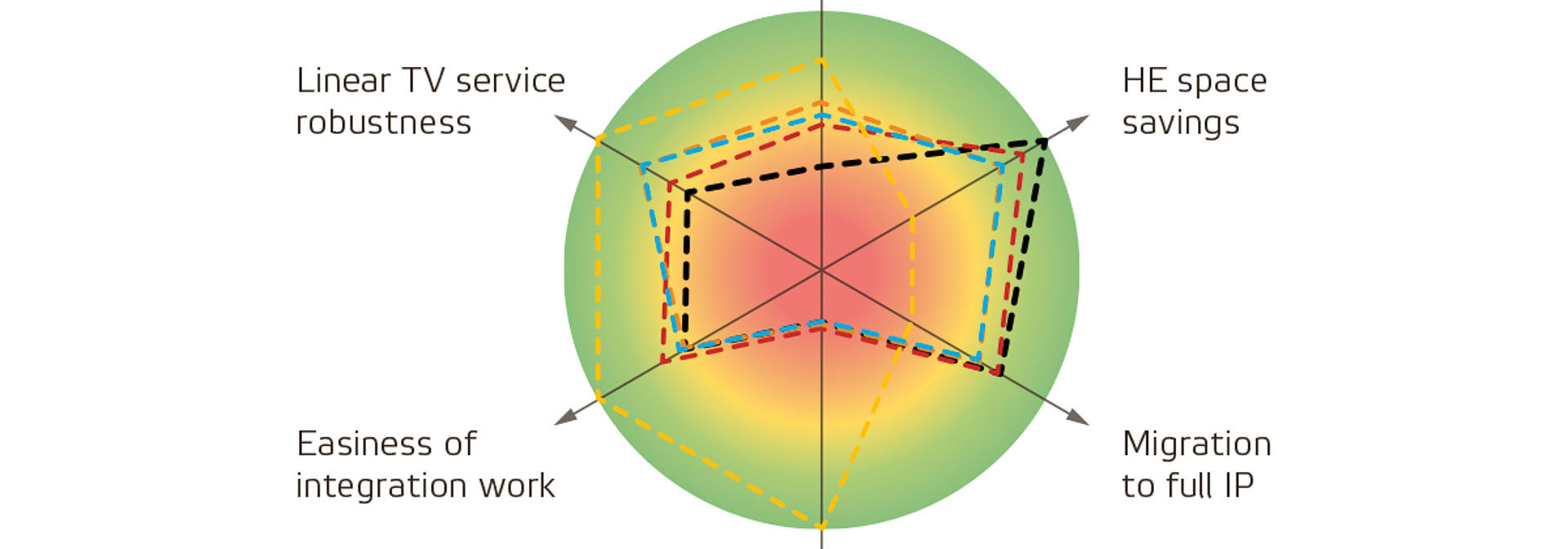
The shift to distributed access: The challenges of video delivery
The advent of Anga 2018 has kept us busy. Besides practical arrangements, we wanted to create material for operators who are eager to take a quantum leap and shift to distributed access architectures. Our target was to answer the question: How can cable television operators shift to distributed access architectures cost effectively, while still needing to run old legacy systems during (and perhaps even after) the transformation? The question is complex and providing a comprehensive answer would require an entire book. Therefore, we decided to answer the question via several white papers; just published, part 1 covers video transmission when the goal is a Remote PHY-based network.
While I recommend reading the entire white paper, some of you may prefer jumping to the steak instead of ordering a full-course dinner; meat lovers, here we go. These ten points cover some of our findings and their detailed reasoning is described in the white paper that can be accessed through this link.
- The line between data transmission and broadcast television blurs. Successful Remote PHY roll-outs require several teams – previously operating their ‘own’ devices – to understand each other if new platforms are being shared.
- Consumers will experience long service breaks during the transition period unless renovation projects are carefully planned.
- If a CCAP Core and a Remote PHY are used for linear television transmission, software and configuration upgrades might surprise linear TV experts who dislike non-linear behaviour during upgrades. A simple way, but not necessarily the preferred way, to solve the described issue is to use an RF overlay.
- When the CCAP Core is used for the L2TP encapsulation of linear television and the CCAP Core licensing model is based on how much bandwidth subscribers consume, the transmission of linear television may become expensive.
- A practical approach would be to bypass the CCAP core and convert video headends to Video Engines or to Video Auxiliary Cores. This approach structures system management but requires integration work. However, the integration work may pay dividends, as two separate teams can now manage their ‘own’ solutions quite independently.
- Monetary benefits may justify the ‘divide and rule’ approach, converting DOCSIS Cores into commodities and having a separate Principal Core.
- The traditional RF overlay could be judged to be old-fashioned, but it is a cost-effective and robust alternative for linear television transmission.
- Creating and managing PSI/SI tables forms a focal challenge when Remote PHY devices replace existing edge QAM platforms.
- Multicasting L2TP encapsulated video traffic requires special attention.
- When operators consider video delivery over distributed architectures, comparing at least the following attributes assists in the decision-making process: cost effectiveness, headend space savings, migration to full IP, analogue TV support, the ease of integration work and linear TV service robustness.
Please read the white paper if you want to know the detailed reasoning behind these points or join the ANGA COM 2018 conference on Wednesday, June 13, where you will be able to attend the technology discussion “DOCSIS® 3.1 – new network options”, where I will present various insights in my talk called “The Challenges of Video Delivery in a Distributed Architecture”. The discussion will take place 4:45–6:00 p.m. in Room 2. See you soon!
Arttu Purmonen
Arttu Purmonen
I joined Teleste in 1997 and engineered video processing and data transmission products. I have worked as engineer, project manager, product manager and business director but understanding customer perspective has always motivated me. It brought me to be responsible for system and technical marketing where my internal driving force and former experience can party together. See my LinkedIn.



